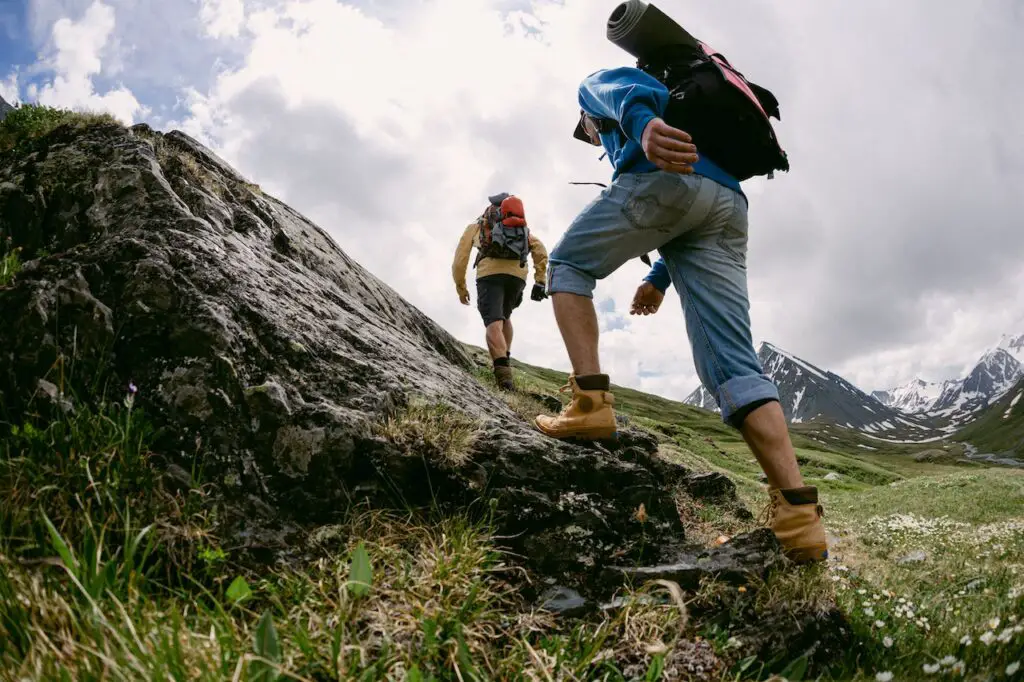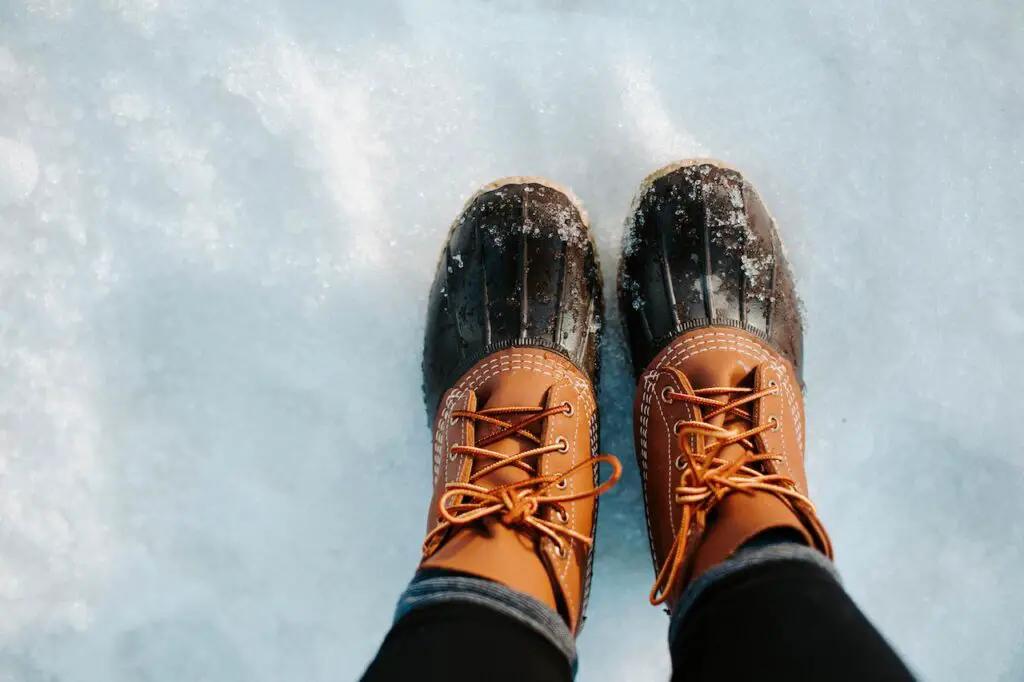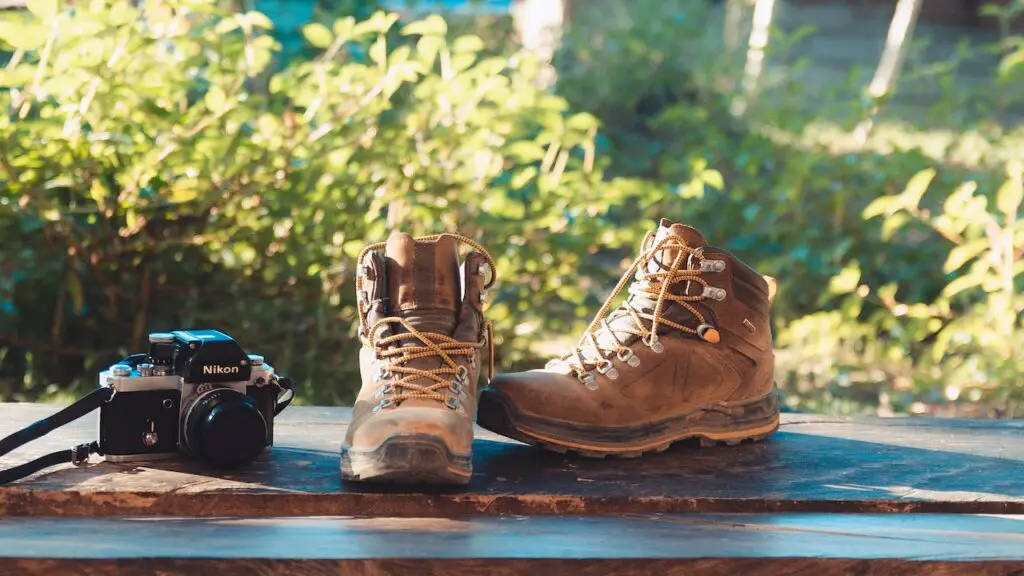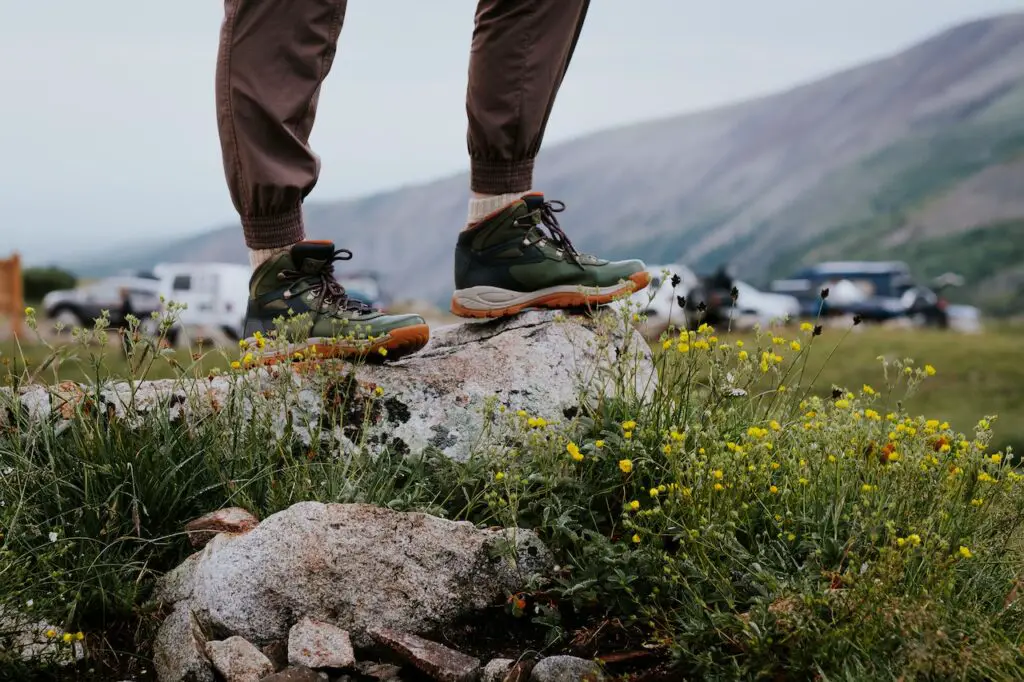Hiking, for many of us, is not just an outdoor activity; it’s a passion, a way to connect with nature, and a chance to embark on unforgettable adventures. There’s something truly liberating about strapping on a pair of reliable hiking boots and setting out on a trail, whether it’s winding through a dense forest, scaling a majestic mountain, or meandering along the tranquil shores of a pristine lake.
As someone who has always been drawn to the great outdoors, I’ve had my fair share of hiking experiences. From the rugged terrains of the Pacific Northwest to the arid deserts of the Southwest, I’ve explored diverse landscapes and encountered countless breathtaking vistas. Yet, I’ve come to realize that while the adventure itself is exhilarating, the choice of footwear can make all the difference between a triumphant trek and a painful plod.
In this guide, we’ll delve deep into the world of hiking boots tailored specifically for men. We’ll explore not only the technical aspects of these boots but also the art of seamlessly blending comfort and style. So, whether you’re an experienced hiker seeking to upgrade your gear or a novice embarking on your first outdoor adventure, this article is your compass to navigate the exciting realm of hiking boots.

The Science Behind Hiking Boots
Hiking boots, often considered a hiker’s most essential gear, are not just ordinary footwear. They are the result of meticulous engineering, designed to withstand the toughest challenges that Mother Nature throws at us. To truly appreciate the value of hiking boots, it’s important to understand the science behind their construction.
The Anatomy of a Hiking Boot
Hiking boots are not one-size-fits-all; they are crafted with careful consideration of various elements. The anatomy of a hiking boot comprises several key components:
- Outsoles: The outermost layer of the sole, often made from durable rubber, provides traction and grip on various terrains. Tread patterns vary to suit specific conditions, ensuring you stay firmly planted, whether on rocky slopes or muddy trails.
- Midsoles: Positioned between the outsole and insole, midsoles are responsible for cushioning and shock absorption. EVA (ethylene-vinyl acetate) and polyurethane are common materials used in midsoles, each offering distinct benefits in terms of comfort and support.
- Uppers: The upper part of the boot, typically made of leather, synthetic materials, or a combination, protects your feet from debris, water, and other elements. It also plays a crucial role in providing ankle support and stability.
The Importance of Proper Fit and Support
Imagine hiking through rugged terrain with ill-fitting or unsupportive footwear – it’s a recipe for discomfort and potential injury. This is where the science of fit and support comes into play:
- Proper Sizing: Hiking boots should fit snugly but not too tight. A proper fit prevents your feet from sliding inside the boot, reducing the risk of blisters and discomfort.
- Arch Support: Adequate arch support helps distribute your weight evenly, reducing strain on your arches and preventing foot fatigue on long hikes.
- Ankle Support: Hiking boots, especially those designed for challenging trails, often feature high ankle collars to support and stabilize your ankles, reducing the risk of sprains.
Related: The 13 Best Men’s Boots for Every Occasion

Comfort is Key
When it comes to hiking, comfort should be your North Star. Picture yourself on a lengthy trail, surrounded by nature’s grandeur – the last thing you want is discomfort hindering your experience. Hiking boots that prioritize comfort can turn a challenging hike into an enjoyable journey. Let’s delve into why comfort is paramount:
The Significance of Comfort During Hikes
Comfortable hiking boots make every step feel like a breeze, reducing the risk of fatigue and foot-related issues. They keep your feet happy, so you can focus on the beauty around you rather than on discomfort. Here’s why comfort matters:
- Reduced Fatigue: Well-cushioned insoles and proper arch support reduce the strain on your feet, helping you hike longer without tiring quickly.
- Blister Prevention: Boots that fit snugly without causing pressure points or friction are less likely to cause painful blisters.
- Confidence Booster: Comfortable boots boost your confidence to tackle challenging terrain, knowing your feet are well taken care of.
Cushioning and Arch Support in Hiking Boots
Comfort starts from the ground up, quite literally. Hiking boots employ advanced cushioning technologies like EVA foam and gel inserts to absorb shock and provide a plush feeling with each step. Arch support is equally crucial – it helps distribute your weight evenly across your foot, preventing discomfort and fatigue.
Related: 12 of The BEST-LOOKING Sneakers You Need To Buy in 2023.

Style Matters Too
Hiking boots are no longer just utilitarian pieces of outdoor gear; they’ve become fashion statements that reflect your personality and style. Gone are the days when function trumped aesthetics – today, style is a critical aspect of hiking boot design, and rightfully so. Let’s explore why style matters when choosing the perfect pair of hiking boots:
The Evolution of Style Trends in Hiking Boots for Men
Hiking boots have evolved far beyond their traditional, chunky designs. Modern hiking boots incorporate sleeker profiles, contemporary colorways, and innovative materials, catering to the style-conscious hiker. This evolution has led to a fascinating fusion of functionality and fashion, making hiking boots versatile for various settings.
Choosing Stylish Yet Functional Boots
While style is undoubtedly essential, functionality should never be compromised. The ideal hiking boots strike a perfect balance between aesthetics and performance. Here’s how to choose stylish yet functional boots:
- Material Selection: Look for boots crafted from premium materials like full-grain leather or waterproof synthetic materials, which not only offer style but also durability and weather resistance.
- Color Options: Explore a range of color options to find a pair that complements your outdoor wardrobe and personal style.
- Design Elements: Pay attention to design details like contrast stitching, metal hardware, and logo placement, as these can enhance the overall style of the boots.
Related: Sailing through Style: Embrace the Sun with Trendy Men’s Boat Shoes

Durability and Longevity
Durability is the unsung hero of hiking boots, quietly ensuring your footwear withstands the harshest conditions and lasts for seasons of adventures. Understanding the importance of durability and longevity is crucial when selecting hiking boots.
Discussing the Durability of Hiking Boots
Hiking boots are subjected to considerable wear and tear – from rocky trails to muddy paths and everything in between. This is where durability comes into play. High-quality hiking boots are built to withstand the rigors of the outdoors, featuring reinforced materials, robust stitching, and protective elements.
Extending the Lifespan of Your Boots
While investing in durable boots is essential, you can further extend their lifespan with proper care. Regularly clean and waterproof your boots, store them in a cool, dry place, and address any signs of wear promptly. Some boots even offer resoling options, allowing you to refresh your favorite pair rather than replacing them.
Prioritizing durability ensures your hiking boots become a long-term investment, accompanying you on countless adventures and creating lasting memories. So, choose wisely, and your boots will reward you with years of reliable service in the great outdoors.
Terrain-Specific Hiking Boots
The great outdoors is an expansive playground, with diverse terrains that demand specific footwear for optimal performance and safety. Selecting terrain-specific hiking boots is crucial for a seamless and enjoyable hiking experience.
Explore Different Types of Terrain and Their Boot Requirements
Every terrain has its unique challenges, from rugged mountain trails to lush forest paths and arid desert sands. Understanding the demands of these terrains can guide your choice of hiking boots. For example:
- Mountain Hiking: Steep slopes and rocky terrain call for boots with excellent ankle support and robust outsoles for traction.
- Forest Trails: Boots with good grip, waterproofing, and breathable uppers are ideal for navigating through damp underbrush and leafy trails.
- Desert Adventures: Ventilated and lightweight boots that protect your feet from scorching sands are essential.
Related: The 15 Best Men’s Parkas to Buy Right Now

Weather-Ready Boots
Nature is unpredictable, and weather conditions can change in an instant during your outdoor escapades. Having weather-ready hiking boots in your arsenal is essential for staying comfortable and safe, regardless of what the elements throw your way.
Weather-ready hiking boots are designed to combat rain, snow, mud, and extreme temperatures. They keep your feet dry, warm, and protected from the harshest conditions, ensuring your hiking experience remains enjoyable.
Quality hiking boots often come with waterproof membranes like Gore-Tex or event, sealing out moisture while allowing sweat to escape. Insulation materials like Thinsulate or PrimaLoft keep your feet warm in chilly weather without adding excessive bulk.
Brand Showdown
Merrell
Known for their commitment to comfort and performance, Merrell hiking boots often feature advanced cushioning technologies like M-Select MOVE footbeds for superior support. They excel in creating versatile boots suitable for various terrains, perfect for those seeking all-around reliability.
Salomon
Salomon shines in the realm of lightweight, agile hiking boots, making them ideal for fast-paced adventures. Their boots often incorporate innovative lacing systems and Contagrip outsoles for exceptional traction. If you prefer swiftness on the trail without compromising stability, Salomon is a top contender.
Keen
Keen stands out for its distinctive toe protection design and eco-conscious manufacturing practices. Their hiking boots offer ample toe room and rugged durability, making them a go-to choice for those exploring rocky terrain or working outdoors.
Columbia
Columbia’s boots prioritize versatility, with models suitable for both hiking and everyday wear. Omni-Tech waterproofing and Omni-Grip outsoles provide reliable performance in various conditions, making Columbia a reliable option for all-season hikers.
The North Face
The North Face is renowned for its technical expertise in outdoor gear. Their hiking boots often feature GORE-TEX membranes and Vibram outsoles, ensuring top-notch waterproofing and traction for challenging hikes.
Recommendations
- Merrell Moab 2 Mid Waterproof: A comfortable and versatile option for all-around hiking.
- Salomon X Ultra 3 Mid GTX: Lightweight and agile for fast hikers.
- Keen Targhee III Mid WP: Sturdy and protective for rugged terrain.
- Columbia Newton Ridge Plus II: Versatile boots suitable for both hiking and casual wear.
- The North Face Hedgehog Fastpack GTX: Technical prowess for challenging conditions.
Related: Tecova Men’s Boots Review: Finding Quality and Style

Budget-Friendly Options
Hiking doesn’t have to drain your wallet. For budget-conscious hikers, we recommend affordable yet reliable options:
Merrell Moab 2 Ventilator: Known for durability and comfort without the hefty price tag.
Columbia Newton Ridge Plus II: Affordable boots that deliver solid performance on the trail.
Hi-Tec Men’s Bandera Mid WP: Budget-friendly choice with waterproofing and good traction.
These boots prove that you can enjoy the great outdoors without breaking the bank. Quality and affordability can go hand in hand, and these options are proof of that.
FAQs (Frequently Asked Questions)
What is the ideal way to break in hiking boots?
Breaking in hiking boots is essential to prevent discomfort and blisters on the trail. To break in your boots:
Wear them around the house: Start by wearing your boots indoors for short periods to let your feet adapt to them.
Take short hikes: Gradually increase the duration of your hikes as your boots become more comfortable.
Use proper socks: Wear the socks you intend to use while hiking to ensure a proper fit.
Remember, the break-in process may vary depending on the boot material and your foot’s unique shape, so be patient.
Can I use hiking boots for everyday wear?
Yes, you can! Many hiking boots are designed to be versatile, and their rugged construction makes them suitable for everyday wear. They offer excellent support and comfort for various activities beyond hiking, such as walking, light hiking, or even casual outings. Just ensure they match your style and are comfortable for prolonged use.
How do I choose the right size for hiking boots?
Choosing the right size is crucial for comfort and preventing foot problems. Follow these steps to find the right size:
Measure your feet: Use a foot measuring device or visit a shoe store for a professional measurement.
Consider your sock thickness: Account for the type of socks you’ll wear while hiking.
Check for proper fit: Your toes should have room to wiggle, and there should be no pressure points.
Walk around: Take a walk in the boots to ensure they don’t pinch or rub anywhere.
Remember that sizing may vary between brands, so always consult the manufacturer’s size chart and read user reviews for guidance.
Are there vegan-friendly hiking boot options?
Yes, there are vegan-friendly hiking boot options available for those who prefer cruelty-free footwear. These boots are made without any animal-derived materials like leather or suede. Instead, they use synthetic materials and advanced technologies to provide the same level of performance, comfort, and durability as traditional hiking boots.
Look for brands that specifically label their products as “vegan” or “animal-free” to ensure you’re making an ethical choice.
What’s the best way to prevent blisters while hiking?
Preventing blisters while hiking is essential for an enjoyable outdoor experience. Here are some tips to avoid blisters:
Choose moisture-wicking socks: Opt for socks that keep your feet dry, reducing friction.
Properly size your boots: Ensure a snug fit without excessive tightness.
Break in your boots: Gradually wear them in to reduce friction points.
Use blister prevention products: Apply blister-specific tapes or creams to potential problem areas.
Take regular breaks: Give your feet time to breathe and rest during long hikes.
Keep your feet clean and dry: Remove wet socks promptly and clean any dirt or debris from your boots.


